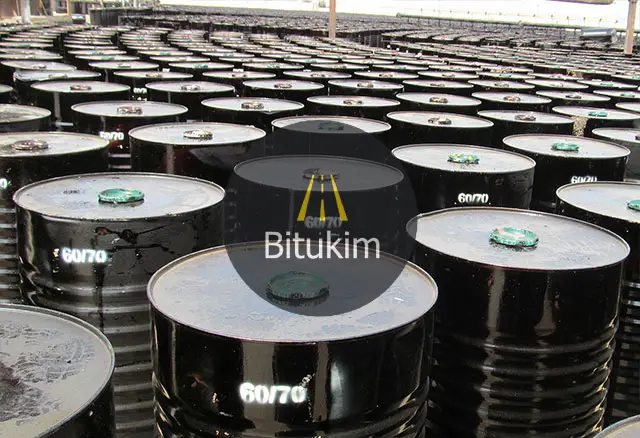Bitumen 60/70 vs Other Bitumen Grades: A Comparative Analysis

Bitumen is a critical material used in road construction, roofing, and various industrial applications. Different grades of bitumen are selected based on their physical properties and performance characteristics. Bitumen 60/70 is one such grade that is widely used, particularly in hot mix asphalt for road surfaces. This comparative analysis explores how Bitumen 60/70 stands against other commonly used bitumen grades, highlighting key differences in specifications, applications, and performance.
1. Understanding Bitumen Grades
Bitumen grades are categorized based on their physical properties, including penetration, viscosity, and softening point. The number in the grade typically represents the penetration value at 25°C, with lower numbers indicating harder bitumen and higher numbers indicating softer bitumen.
Bitumen 60/70 is characterized by its penetration range of 60 to 70 dmm (decimals of a millimeter), indicating a medium hardness suitable for a variety of applications.
2. Bitumen Grades for Comparison
- Bitumen 40/50
- Bitumen 70/100
- Bitumen 85/100
- Bitumen 160/220
3. Comparative Analysis
a. Penetration and Hardness of Bitumen 60/70 vs Other Bitumen Grades
- Bitumen 60/70:
- Penetration Range: 60-70 dmm
- Hardness: Medium; suitable for a range of applications from road construction to roofing.
- Bitumen 40/50:
- Penetration Range: 40-50 dmm
- Hardness: Harder than 60/70; generally used in hot climates or for heavy-duty applications where higher stability is required.
- Bitumen 70/100:
- Penetration Range: 70-100 dmm
- Hardness: Softer than 60/70; often used in colder climates or for applications requiring greater flexibility and deformation resistance.
- Bitumen 85/100:
- Penetration Range: 85-100 dmm
- Hardness: Even softer; used in very cold climates or for applications needing high flexibility.
- Bitumen 160/220:
- Penetration Range: 160-220 dmm
- Hardness: Softest; used for special applications requiring very high flexibility and ease of spreading.
b. Softening Point of Bitumen 60/70 vs Other Bitumen Grades
- Bitumen 60/70:
- Softening Point: Typically between 45°C and 60°C
- Application: Provides a good balance between flexibility and stability, suitable for general road construction and asphalt production.
- Bitumen 40/50:
- Softening Point: Higher than 60/70
- Application: Better for areas with higher temperatures or heavy load-bearing requirements.
- Bitumen 70/100:
- Softening Point: Lower than 60/70
- Application: More suitable for cooler climates or applications requiring more flexibility.
- Bitumen 85/100:
- Softening Point: Lower than 70/100
- Application: Ideal for very cold climates or where extreme flexibility is needed.
- Bitumen 160/220:
- Softening Point: Lowest among the grades
- Application: Used in very specialized cases where maximum flexibility is required.
c. Viscosity of Bitumen 60/70 vs Other Bitumen Grades
- Bitumen 60/70:
- Dynamic Viscosity: Medium range
- Application: Provides good workability for hot mix asphalt and general road construction.
- Bitumen 40/50:
- Dynamic Viscosity: Higher viscosity, making it more stable at high temperatures.
- Bitumen 70/100:
- Dynamic Viscosity: Lower viscosity, suitable for ease of application in cooler temperatures.
- Bitumen 85/100:
- Dynamic Viscosity: Even lower viscosity, enhancing flexibility and workability in cold conditions.
- Bitumen 160/220:
- Dynamic Viscosity: Lowest viscosity, used for special applications requiring very high flexibility.
4. Applications of Bitumen 60/70 vs Other Bitumen Grades
- Bitumen 60/70:
- Road Construction: Widely used for various road surfaces, including highways and urban roads.
- Asphalt Production: Commonly used in hot mix asphalt for its balanced performance characteristics.
- Roofing: Used in some roofing applications, though not as common as specialized roofing bitumens.
- Bitumen 40/50:
- Road Construction: Preferred for high-temperature climates or heavy-duty applications.
- Asphalt Production: Suitable for high-stress road surfaces and industrial applications.
- Bitumen 70/100:
- Road Construction: Ideal for colder climates where greater flexibility is needed.
- Asphalt Production: Used in areas with less temperature variation.
- Bitumen 85/100:
- Road Construction: Best for very cold regions or specialized applications requiring high flexibility.
- Bitumen 160/220:
- Special Applications: Used in applications needing maximum flexibility and ease of application.

